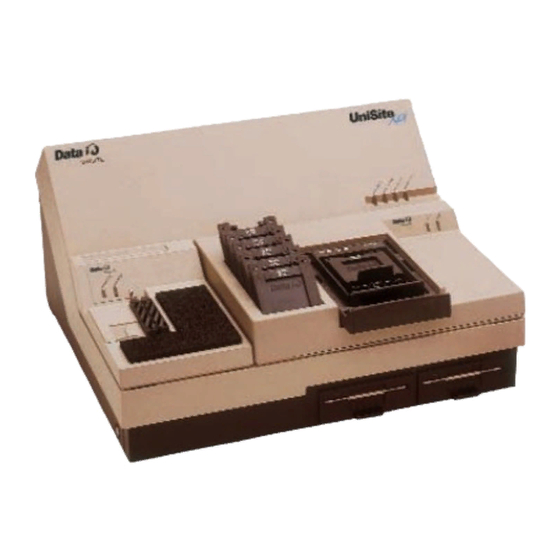
Data I/O UniSite-xpi Manuals
Manuals and User Guides for Data I/O UniSite-xpi. We have 1 Data I/O UniSite-xpi manual available for free PDF download: User Manual
Data I/O UniSite-xpi User Manual (413 pages)
Brand: Data I/O
|
Category: Motherboard
|
Size: 4 MB
Table of Contents
-
Preface
17 -
Introduction
21 -
-
-
Maintenance69
-
-
-
Review101
-
Special Note109
-
-
Before You Begin110
-
Select a Device110
-
Load the Data111
-
Loading the Data113
-
Review113
-
-
-
Before You Begin114
-
Getting There114
-
Review116
-
-
-
Getting There117
-
Review118
-
-
Before You Begin122
-
What to Transfer123
-
Review125
-
-
-
Before You Begin126
-
Moving Around127
-
Making Changes127
-
Review128
-
-
-
Before You Begin128
-
Review131
-
-
-
Before You Begin131
-
Review133
-
-
Commands
135-
-
Menu Maps135
-
-
Select Device139
-
Quick Copy143
-
Load Device144
-
Program Device147
-
Verify Device154
-
More Commands158
-
Configure System159
-
Programmer ID174
-
Keep Current177
-
Custom Menu Algs180
-
Mass Storage186
-
Device Checks187
-
Edit Data196
-
File Operations207
-
Job File214
-
Remote Control216
-
Self-Test216
-
Transfer Data217
-
Yield Tally227
-
-
-
-
System Setup230
-
Exiting CRC Mode231
-
CRC Commands234
-
-
General Notes242
-
-
LOF Field Syntax255
-
-
-
Messages
297 -
Glossary
349 -
Using Modules
362-
-
Configuration362
-
Compatibility363
-
-
-
Using Pinsite380
-
-
Compatibility381
-
Features382
-
-
Gang Programming386
-
-
Error Conditions391
-
SPA Block391
-
Bases392
-
Conductive Pad392
-
-
-
-
Overview393
-
Smartport393
-
-
-
Switching Modes395
-
-
Advertisement
Advertisement